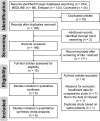The effect of tranexamic acid in open reduction and internal fixation of pelvic and acetabular fracture: A systematic review and meta-analysis
- PMID: 35866801
- PMCID: PMC9302337
- DOI: 10.1097/MD.0000000000029574
The effect of tranexamic acid in open reduction and internal fixation of pelvic and acetabular fracture: A systematic review and meta-analysis
Abstract
Background: Pelvic bone fractures may cause extensive bleeding; however, the efficacy of tranexamic acid (TXA) usage in pelvic fracture surgery remains unclear. In this systematic review and meta-analysis, we aimed to evaluate the efficacy of TXA in open reduction and internal fixation surgery for pelvic and acetabular fracture.
Methods: MEDLINE, Embase, and Cochrane Library databases were systematically searched for studies published before April 22, 2020, that investigated the effect of TXA in the treatment of pelvic and acetabular fracture with open reduction and internal fixation. A pooled analysis was used to identify the differences between a TXA usage group and a control group in terms of estimated blood loss (EBL), transfusion rates, and postoperative complications.
Results: We included 6 studies involving 764 patients, comprising 293 patients who received TXA (TXA group) and 471 patients who did not (control group). The pooled analysis showed no differences in EBL between the groups (mean difference -64.67, 95% confidence interval [CI] -185.27 to -55.93, P = .29). The study period transfusion rate showed no significant difference between the groups (odds ratio [OR] 0.77, 95% CI 0.19-3.14, P = .71, I2 = 82%), nor in venous thromboembolism incidence (OR 1.53, 95% CI 0.44-5.25, P = .50, I2 = 0%) or postoperative infection rates (OR 1.15, 95% CI 0.13-9.98, P = .90, I2 = 48%).
Conclusions: Despite several studies having recommended TXA administration in orthopedic surgery, our study did not find TXA usage to be more effective than not using TXA in pelvic and acetabular fracture surgery, especially in terms of EBL reduction, transfusion rates, and the risk of postoperative complications.
Copyright © 2022 the Author(s). Published by Wolters Kluwer Health, Inc.
Conflict of interest statement
The authors have no funding and conflicts of interests to disclose.
Figures




Similar articles
-
Evaluation of the efficacy of perioperative tranexamic acid in patients with pelvic and acetabular fractures: A systematic review and meta-analysis.Medicine (Baltimore). 2024 Sep 20;103(38):e39703. doi: 10.1097/MD.0000000000039703. Medicine (Baltimore). 2024. PMID: 39312355 Free PMC article.
-
Safety and efficacy of perioperative tranexamic acid infusion in acetabular fracture fixation: A randomized placebo-controlled double-blind prospective study.Injury. 2022 Oct;53(10):3361-3364. doi: 10.1016/j.injury.2022.08.036. Epub 2022 Aug 18. Injury. 2022. PMID: 36031439 Clinical Trial.
-
Effect of tranexamic acid use on blood loss and thromboembolic risk in hip fracture surgery: systematic review and meta-analysis.Hip Int. 2018 Jan;28(1):3-10. doi: 10.5301/hipint.5000556. Hip Int. 2018. PMID: 28983887
-
Efficacy and safety of intravenous tranexamic acid administration in patients undergoing hip fracture surgery for hemostasis: A meta-analysis.Medicine (Baltimore). 2017 May;96(21):e6940. doi: 10.1097/MD.0000000000006940. Medicine (Baltimore). 2017. PMID: 28538384 Free PMC article. Review.
-
Interaction of preoperative chemoprophylaxis and tranexamic acid use does not affect transfusion in acetabular fracture surgery.Eur J Orthop Surg Traumatol. 2024 Feb;34(2):1025-1029. doi: 10.1007/s00590-023-03763-z. Epub 2023 Oct 21. Eur J Orthop Surg Traumatol. 2024. PMID: 37865628 Review.
Cited by
-
Hemorrhage Versus Thrombosis: A Risk Assessment for Anticoagulation Management in Pelvic Ring and Acetabular Fractures-A Registry-Based Study.J Clin Med. 2025 May 9;14(10):3314. doi: 10.3390/jcm14103314. J Clin Med. 2025. PMID: 40429310 Free PMC article.
References
-
- Montmany S, Rebasa P, Luna A, et al. . Source of bleeding in trauma patients with pelvic fracture and haemodynamic instability. Cirugía Española (English Edition). 2015;93:450–4. - PubMed
Publication types
MeSH terms
Substances
LinkOut - more resources
Full Text Sources
Medical
Miscellaneous

